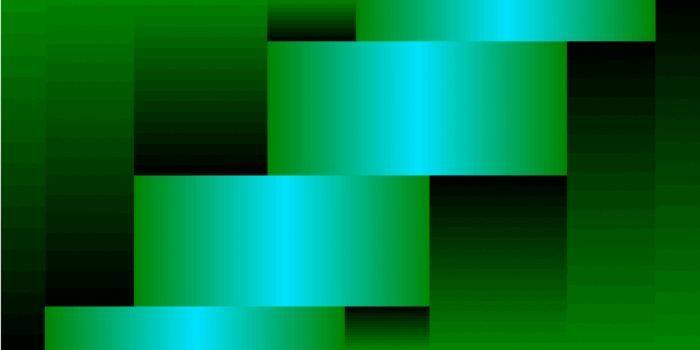As consumers prioritize eco-conscious brands more and more in their daily choices, brands are challenged to deploy meaningful, sustainable marketing strategies to continue earning consumer trust. The truth is that the average consumer today is savvier and more aware of environmental issues than ever before — which means that brands are navigating a marketplace where eco-friendly credentials can make or break consumer trust.
Brands are under real pressure to showcase a strong foundation for their eco-forward initiatives that make everyone happy — and the competition is only getting more cutthroat.
Generation Z is at the helm of these new, eco-savvy, and outspoken consumers worldwide. The younger generation is not afraid to call out a brand if they’re blatantly choosing to be unsustainable — or worse, don’t prove the intentionality and depth of the sustainability marketing a brand does engage in.
What the Data Says: Sustainability Wins
As of 2025, recent data highlights the growing importance of sustainability in business strategies and investment decisions. According to Forbes, the 2025 Edelman Trust Barometer reveals that 63% of employees worry about automation and globalization affecting their future. This means that companies that incorporate sustainability into their culture give employees a sense of security and inspire loyalty and engagement.
Moreover, a 2025 report by the World Economic Forum emphasizes that businesses are leveraging sustainability to drive growth and create innovative solutions, meeting evolving consumer and regulatory demands.
Brands need to keep in mind that sustainability is winning, especially for a generation that is sustainability-oriented and unafraid to demand responsibility and transparency from brands. Let’s see what Gen Z and Millennials have to say.
Forbes states that in the Brand Finance Global 500 2025 Report, the world’s top 500 brands increased in value by 10%, far outpacing global economic growth. Younger consumers are on the lookout for brands that say the right things and take meaningful action on sustainability.
According to Shorr’s 2025 Sustainable Packaging Consumer Report, which surveyed 2,016 American consumers, over half (54%) of respondents reported deliberately choosing products with sustainable packaging in the past six months. 90% even said they’re more likely to purchase from a brand or retailer if its packaging is eco-friendly.
More than half of Millennials (59%) and Gen Z (56%) consciously purchased products with sustainable packaging in the last six months. 43% of consumers are willing to pay extra for a product with sustainable packaging. More than one-third (39%) of consumers have switched to competing brands because they offer sustainable packaging.
In short, sustainability is quickly becoming a must for brands who want to, at minimum, remain afloat long-term and, at maximum, remain competitive. With this in mind, let’s look more closely at how brands can incorporate sustainability strategies into their business and marketing efforts — and how some of the leading brands have done it successfully.
The Benefits of Sustainable Marketing Strategies
A sustainable marketing strategy strikes a delicate balance between promoting products or services while ostensibly minimizing negative short- and long-term impacts on the environment, society, and economy. Tactical approach and promotional goals aside, it’s also a method for brands to consider concerns about sustainability and to demonstrate their commitment to social responsibility.
The benefits of sustainable marketing include — but are not limited to — the following:
- Improved brand reputation: By showing a clear commitment to concerns that are top of mind for hyper-aware consumers, brands can immediately benefit from an improved reputation with their target audience.
- Consumer loyalty: Consumers are more likely to declare loyalty to brands that share their values — meaning that a long-term sustainability-forward approach can easily lead to stronger relationships with current and future customers.
- Cost savings and operational efficiencies: there are numerous opportunities for brands to save on operational costs by opting for more eco-friendly solutions in the long run.
- Shared employee beliefs: In addition to value alignment with consumers, brands can benefit from similar improved morale internally, leading to more commitment and loyalty from employees and a stronger commitment to mutual growth.
- New areas for continued innovation: Sustainability considerations often push brands to think outside of the box and find new ways to connect with consumers while driving a positive impact on society and the environment alike.
Wouldn’t all brands want that?
Sustainable Marketing vs. Greenwashing vs. Green Marketing
A major risk that brands (more frequently than not) run into is greenwashing. The lines between sustainability and greenwashing are subtle, yet, if confused, can be extremely damaging to the brand’s reputation. Greenwashing is akin to misleading your audience to believe that a brand’s products or efforts are dedicated to an environmental or societal cause — but the promotional efforts are superficial tactics to cover the lack of dedication.
In other words, it’s a lie to appeal to a more eco-conscious audience — an unsubstantiated, misleading statement without actionable backing that aims to drive more revenue through false or vague sustainability claims.
While greenwashing misleads consumers with unsubstantiated claims, green marketing and green advertising focus on genuinely sustainable business practices and transparent messaging. Green marketing involves integrating sustainability into a brand’s core strategy — such as using renewable materials or ethical sourcing — while green advertising ensures that sustainability claims are truthful, specific, and backed by verifiable actions.
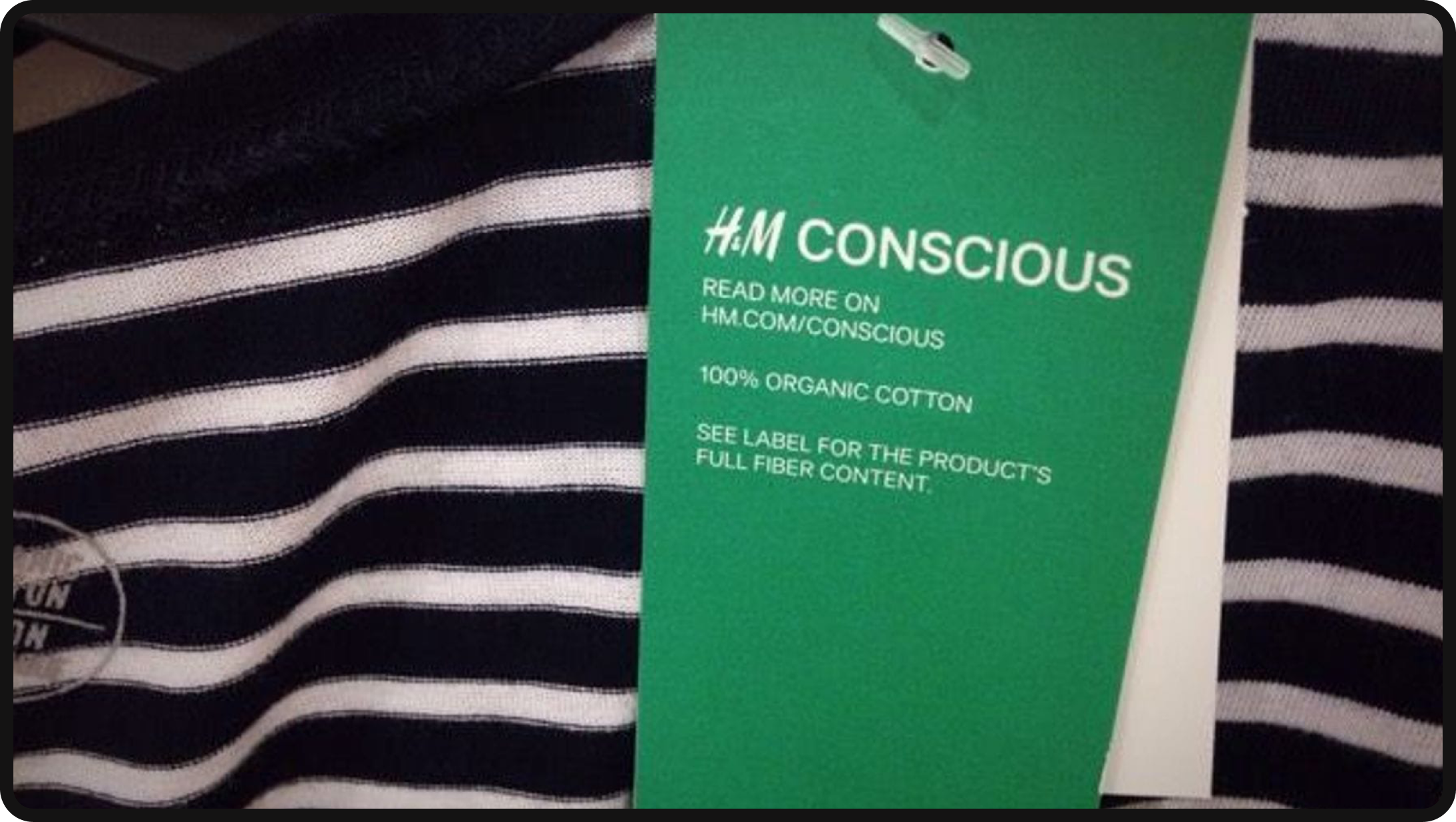
Sustainability cannot be superficial; consumers are observant. If a brand is not sustainable, a consumer can easily pick up on that and denounce the brand. In the age of social media, where consumers spend most of their time online, anyone, anywhere, will listen to the opinions of a former consumer of an unsustainable brand.
This public call for accountability has pushed many brands to genuinely become more sustainable. 50% of consumers said sustainability is one of their top four key purchase criteria when making purchasing decisions, according to Bain & Company. With this generation of leading consumers as eco-conscious as ever, brands cannot afford to be canceled on social media.
The 4 “Ps” of Sustainable Marketing

Let’s look at the foundational 4 Ps of marketing to illustrate all the angles from which brands need to consider sustainability initiatives. While the 4 Ps are a fundamental marketing theory at a high level, the framework can effectively illustrate how deep sustainability efforts and initiatives need to be rooted in the brand’s value system and growth path. To run through the 4 Ps, let’s use the example of AllMatters, formally known as OrganiCup, a company with a prime focus on helping women through their menstrual cycle sustainably with reusable menstrual cups and period underwear.
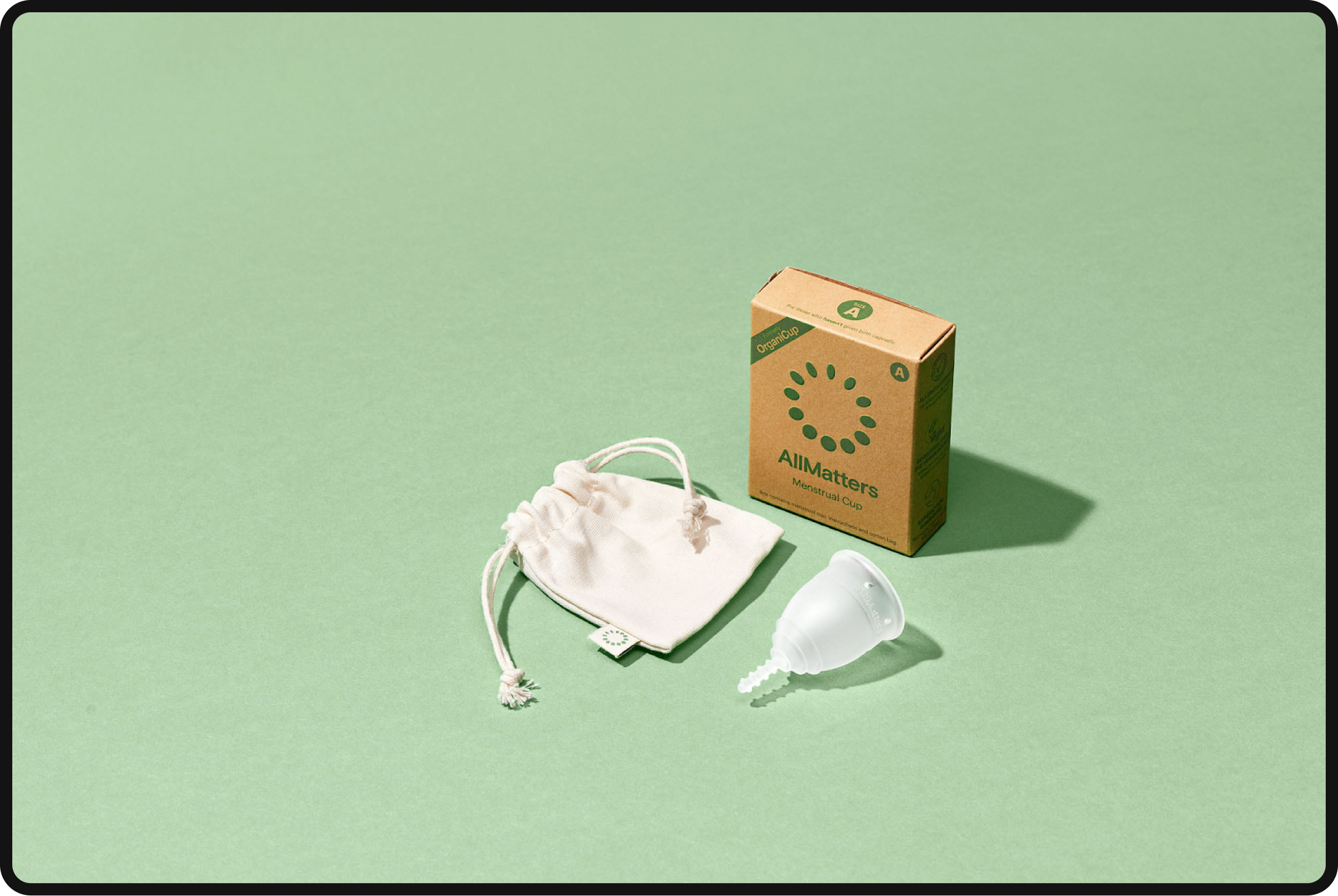
Product
Sustainability begins at the product level, making sure that some (if not all) facets of a product are designed with environmental impact in mind. AllMatters was formerly known as OrganiCup, a sustainable menstrual cup. The full product line itself — ranging from menstrual cups to period underwear — is designed to be reusable, with an added touch of sustainable packaging made from recycled paper and cardboard.
Price
Consumers, such as myself, tend to believe sustainable products are more expensive when it’s often quite the contrary. The value is much more important than the cost for customers using AllMatters – a menstrual cup that can last for years. The National Organization of Women estimates that the average woman spends about $20 on feminine hygiene products per cycle, adding up to about $18,000 over her lifetime. By switching to AllMatters, consumers can save money and reduce their reliance on disposable menstrual products.
The brand is intentional in communicating their mission to create accessible and sustainable feminine care products that won’t break the customer’s bank. AllMatters consciously empowers women to make choices about their self-care with the environment in mind through “democratic prices” and wide distribution.
Place
Next P: accessible and wide distribution to ensure consumers can make environmentally conscious choices with ease. AllMatters is designed for women, by women for their most natural and important needs. Making the product accessible not just from a price point but a distribution point is also clear from their strategy. The products the brand offers are available for purchase online and in stores, and the website makes it easy for customers to locate stores that carry AllMatters products worldwide through their store locator.
Promotion
The final P is consistent consumer engagement and omnichannel communication that introduces the brand and its products, educates customers on product usage and the brand’s commitment to positive impact, and builds awareness about the product, leading to widespread brand sentiment improvement.
AllMatters educates its customers on their impact through their website and social media by backing their claims with data-backed information: more than 7,040 tons of waste saved, 844 million pads and tampons avoided, and 60,000 donations of menstrual cups. Period products cause 200K tons of waste per year, and it can take up to 500 years for them to degrade.
In addition to providing concrete proof of their environmental impact, AllMatters extends its efforts beyond sustainability by addressing the stigma surrounding menstruation. By openly discussing the struggles of embarrassment and judgment that many women face, they position themselves as more than just a product — they become a trusted advocate for change.
This values-driven approach not only strengthens brand loyalty but also fosters a deeper emotional connection with consumers, making AllMatters a brand people want to support and talk about. By tackling both sustainability and social taboos, they differentiate themselves in the market, turning their mission into a key driver of consumer engagement and long-term brand success.
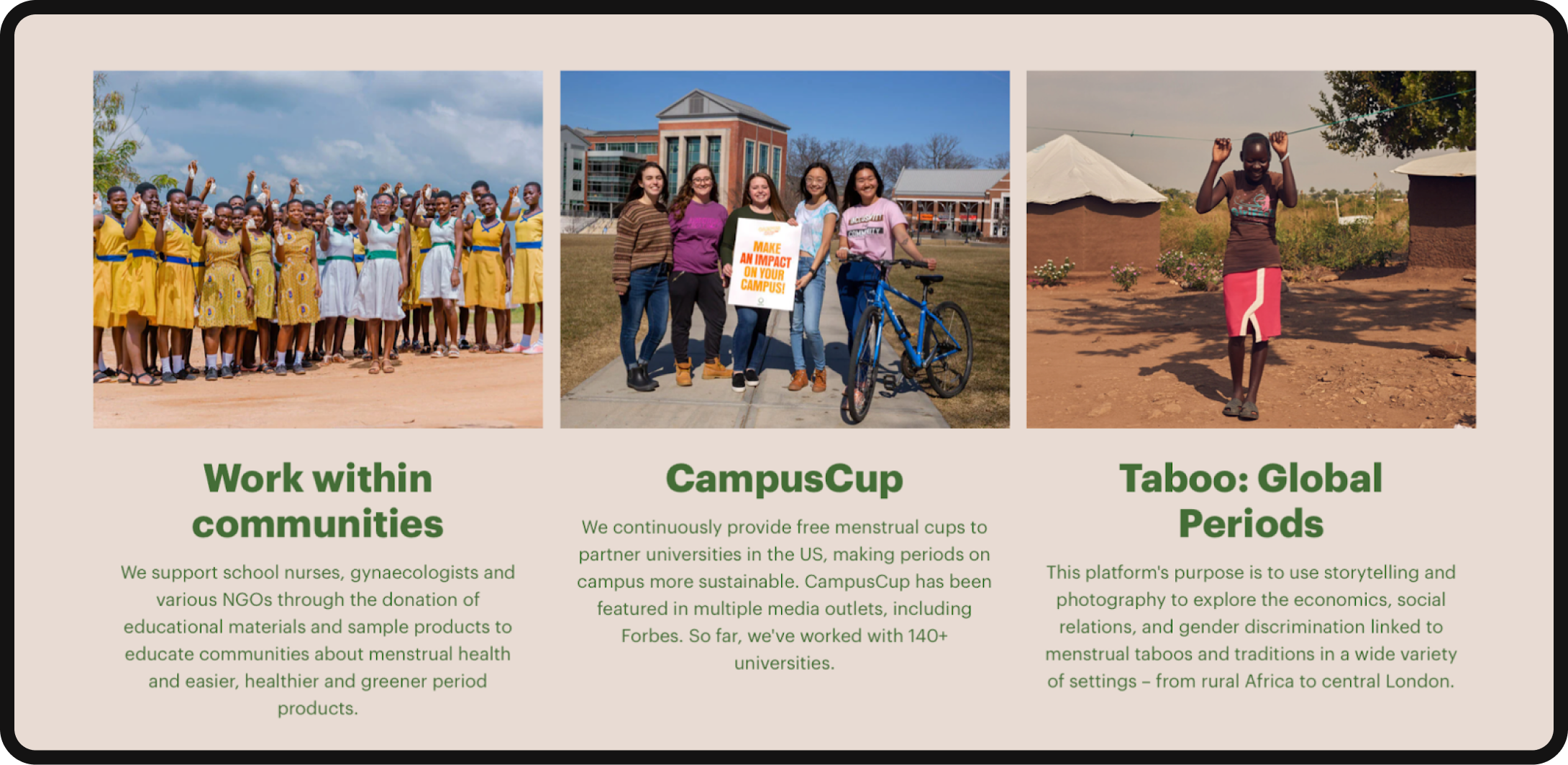
5 (Non-Exhaustive) Sustainable Marketing Strategies
1. Think Like Your Target Consumer
Sustainable marketing is highly dependent on consumer empathy and understanding. Brands gunning for consumer loyalty must align their efforts with the consumer’s desires, values, and aspirations toward an ethical and eco-friendly society. With that in mind, businesses can meet consumer demands effectively, all while tackling critical, ethical, and environmental challenges.
Whether it’s enabling the consumer to make more conscious choices in their day-to-day or understanding what kind of impact the target consumer will care about the most, brands need to consistently put themselves in their customer’s shoes to create effective products and marketing strategies that really connect with the end user.
Fig.1, a clean beauty brand focused on sustainability, offers Micellar Oil Cleansing Wipes, a great example of consumer-focused marketing. The target audience is anyone who wears makeup, and makeup wipes (often a part of a daily skincare routine) are hazardous to the environment.
Knowing this, Fig.1 created makeup wipes that dissolve when placed underwater after use. They’re perfect for on-the-go use and offer a sustainable alternative to traditional wipes, empowering consumers to make eco-friendly choices.
More importantly, Fig.1’s commitment to sustainability reflects a broader shift — where businesses are increasingly expected to take responsibility for their environmental footprint, rather than placing the burden solely on consumers. By creating products that minimize waste, Fig.1 acknowledges the role corporations play in driving meaningful environmental change.

2. Make It Your Mission
A brand must commit to creating a positive impact beyond financial gains. When a brand is transparent and openly shares impactful values committed to sustainability, they form deep connections with consumers who share a similar vision. This fosters a collective effort toward a better world with sustainability as a top priority for brands — and it shows real commitment to a cause that can’t be mistaken for a lie.

Patagonia is a notable sustainable brand that focuses on “demarketing.” Demarketing curbs demand for a product or service and discourages people from using it. Patagonia relies on this type of advertising with its “Don’t Buy This Jacket” campaign to bring awareness to consumers’ shopping habits and their environmental impact.
They’re a brand that’s well-received and known for its sustainability identity and commitment to reduce, reuse, and recycle.
3. Make It Accessible and Valuable
Aside from the direct benefits of the services and products a brand offers, emphasizing their value as a more sustainable choice is important. The consumer’s needs should always come first, but sustainability can add even more value.
A brand that prioritizes both customer satisfaction and environmental impact not only benefits the planet but also strengthens consumer trust — making people feel good about their choice on both a personal and societal level.
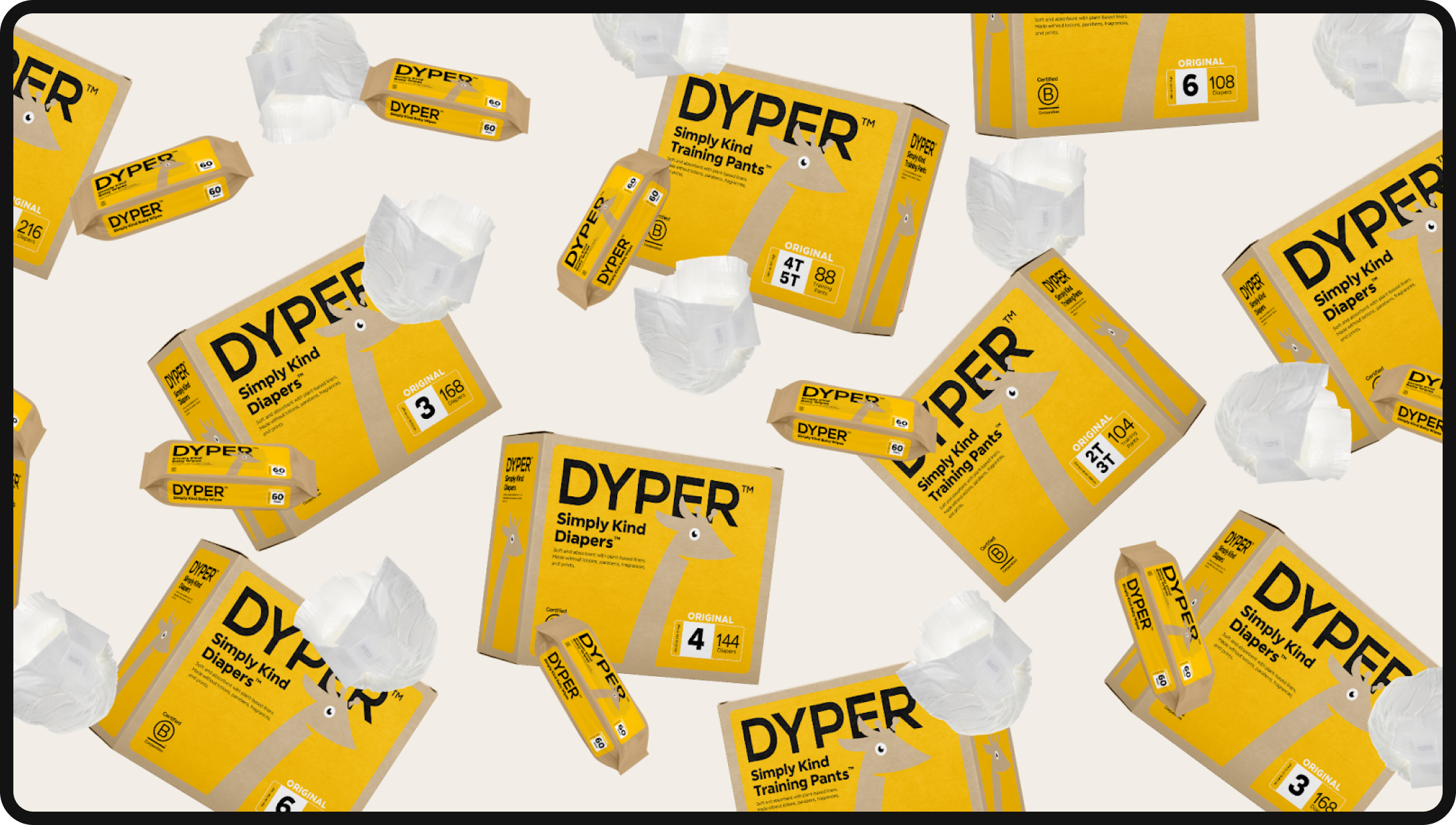
Dyper brings diapers made from the soft viscose from bamboo into the market to help parents worry less about the unsustainability of the sheer volume of diapers they’ll likely have to go through for children.
The brand does not compromise affordability and quality. The product is priced at $19, with a $10 savings on the Diapers Monthly Box plus free shipping and 2X Perks points. It’s an innovative way to target parents who are willing to find the best products for their children while also benefiting the environment.
4. Educate the Consumer for Stronger Social Impact
Going beyond profit-driven motives, sustainable marketing should focus on educating, encouraging awareness, and promoting change in the environment by empowering the customer with the strongest tool: knowledge.

A brand true to this is Green Toys with their 100% recycled products, making sure that customer education starts at a young age. Children are curious creatures who learn by touching, licking, and biting their toys. Parents can feel confident that Green Toys are safe for their children, free from harmful materials, and made from 100% recycled products.
While young kids may not think about sustainability yet, these choices help instill eco-conscious habits early ensuring that sustainability becomes a natural part of their everyday lives as they grow. No batteries are needed for these toys; it’s just the kids’ imagination.
5. Always Innovate

Brands are always challenged to find new ways to overcome environmental obstacles with technology, storytelling, and creative campaigns. They must stay focused and ahead of the game to encourage their consumers and competitors to join their sustainability efforts.
Cotopaxi doesn’t just prioritize ethics, it innovates within sustainability by integrating recycled and repurposed materials, creating gear that reduces waste without compromising quality. Their commitment extends beyond their products to rethinking supply chains, forming partnerships with ethical factories, and funding global poverty alleviation programs.
By embedding sustainability into every aspect of their business, Cotopaxi demonstrates how brands can push boundaries and create new, scalable solutions for environmental and social impact.
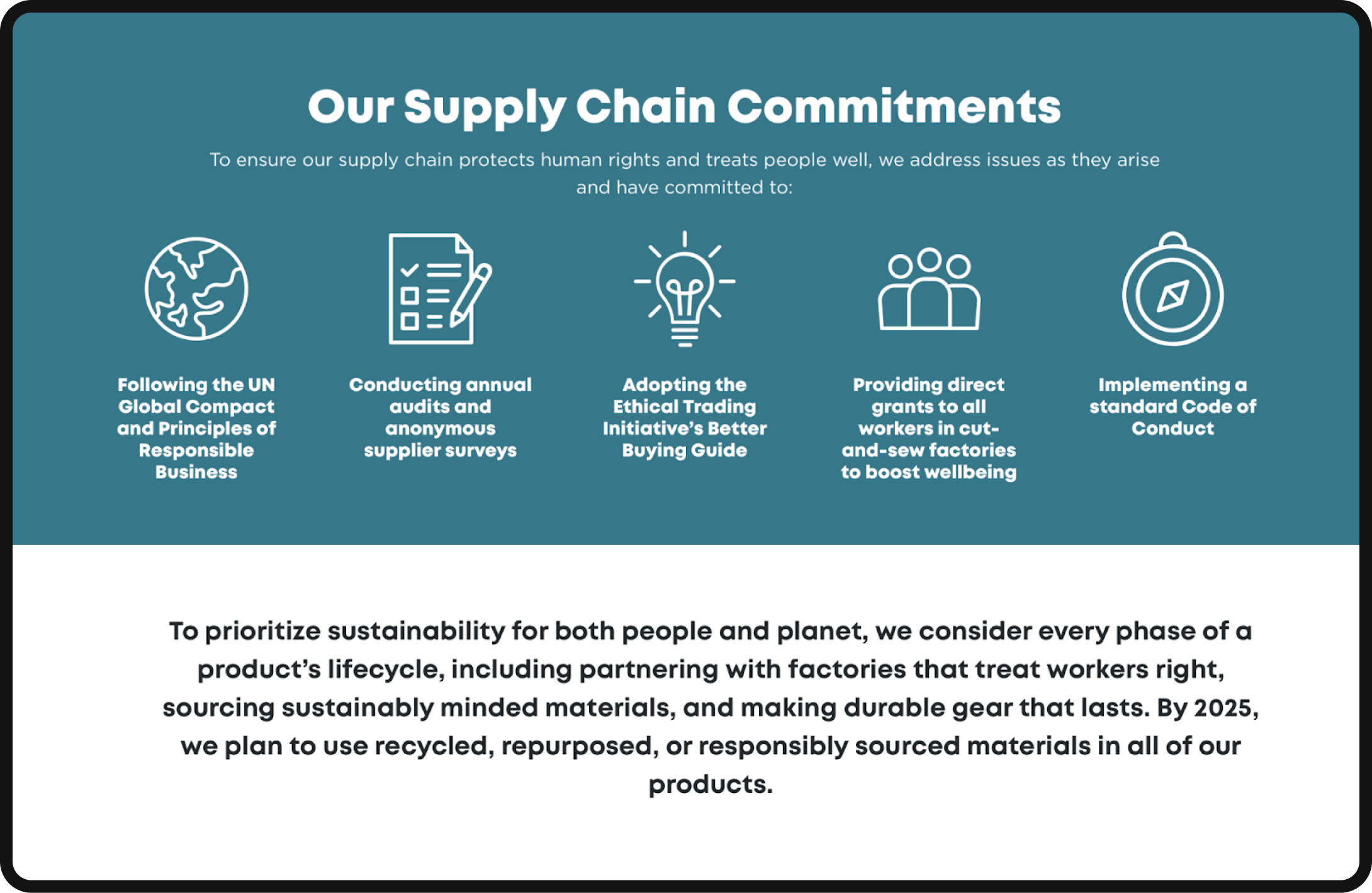
Closing Thoughts
The overall landscape of marketing is constantly changing and evolving for the betterment of society and the environment — and it’s largely driven by the customers demanding accountability and care from brands. Brands are becoming more eco-friendly and eco-conscious for consumer preferences. Sustainability is not a trend but a way for brands to change their ways for their consumers. Brands must not only promote their products but educate their consumers about sustainability and demonstrate genuine commitment to ethical practices.
Sustainable marketing is not about selling products. It’s about cultivating a deeper connection with consumers, driving positive societal change, and collectively working towards a more sustainable and honest world. As brands continue to innovate and adapt, the integration of sustainability into marketing strategies will not only be a competitive advantage but a moral imperative in shaping a better future.



